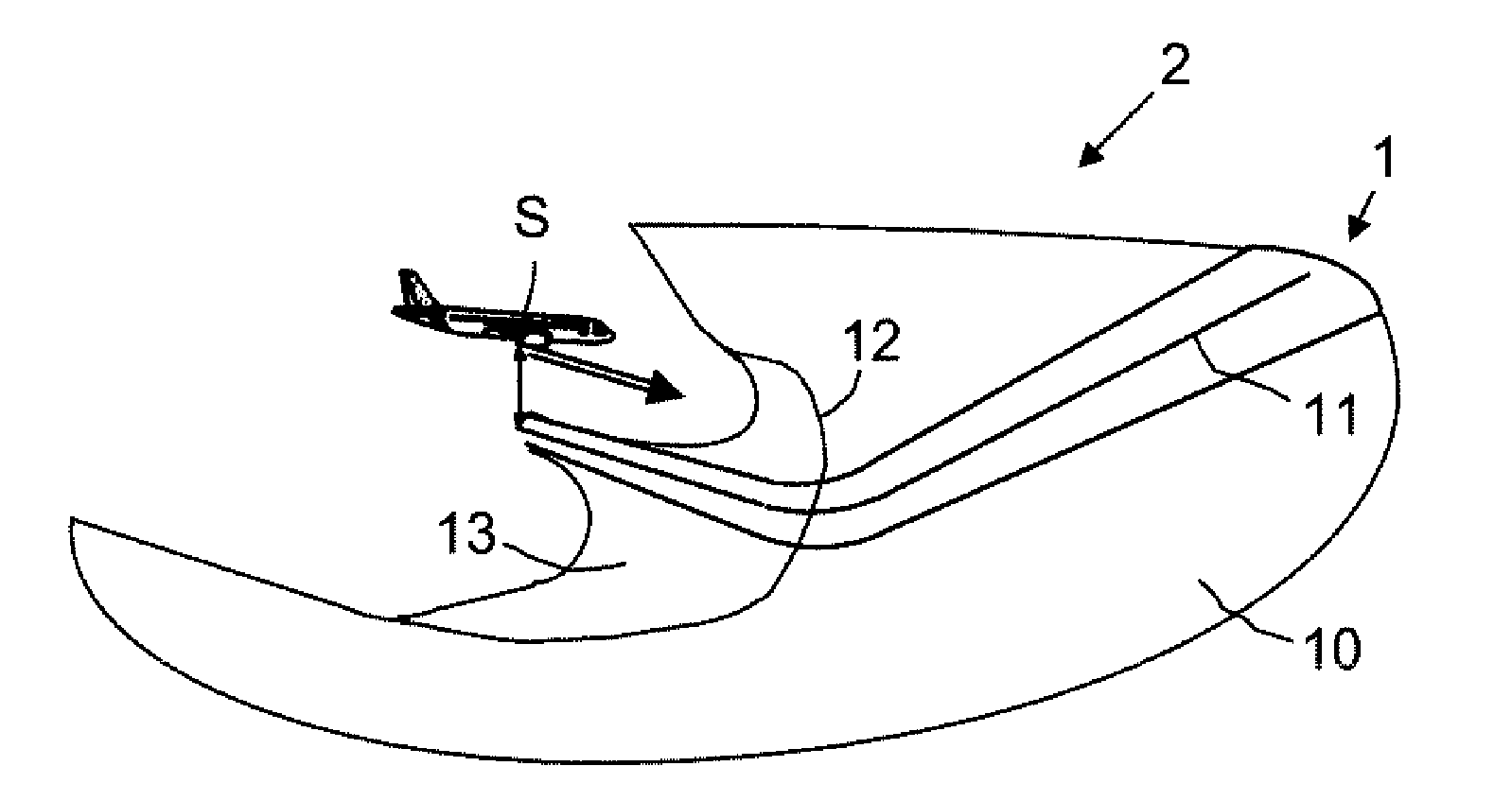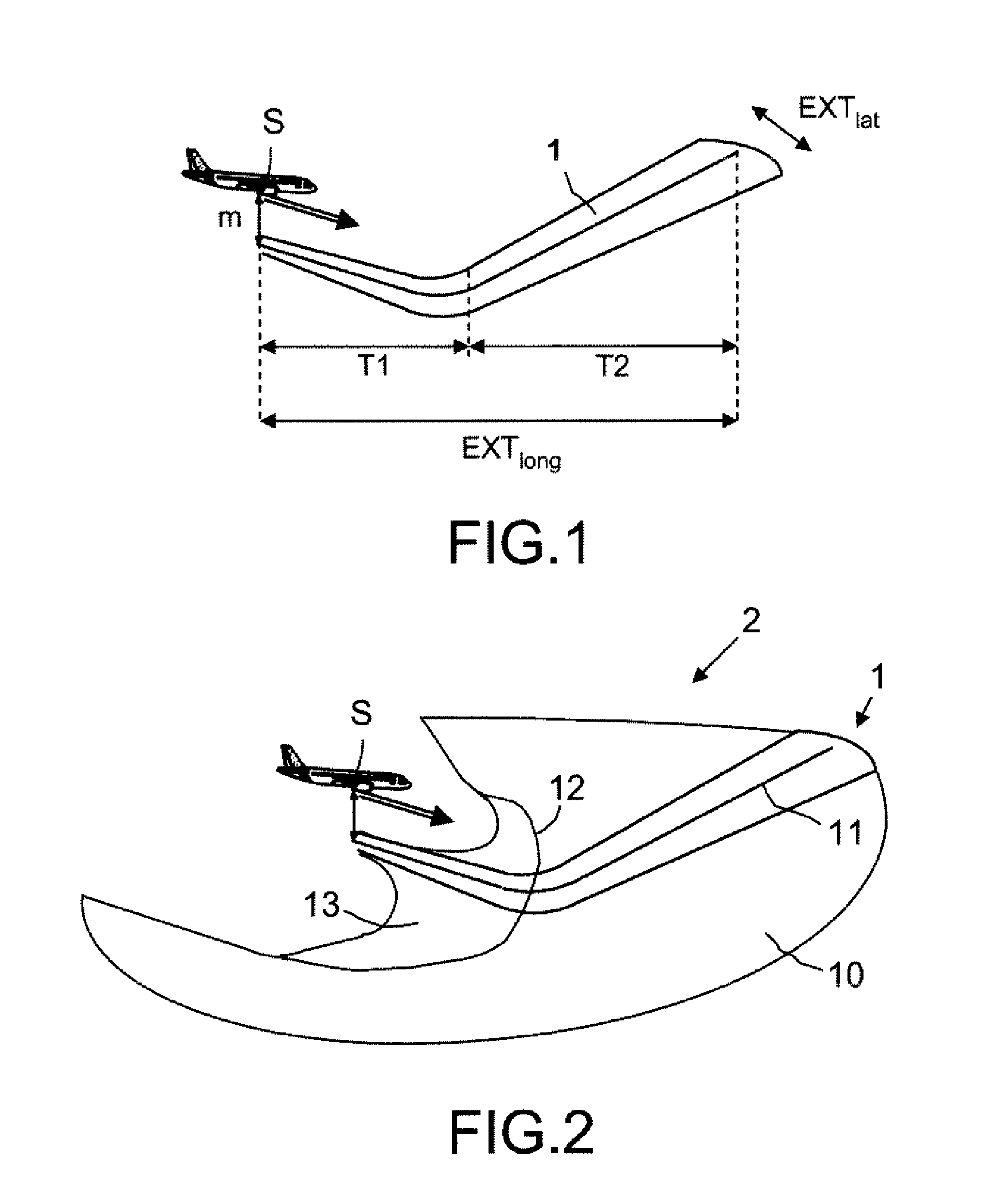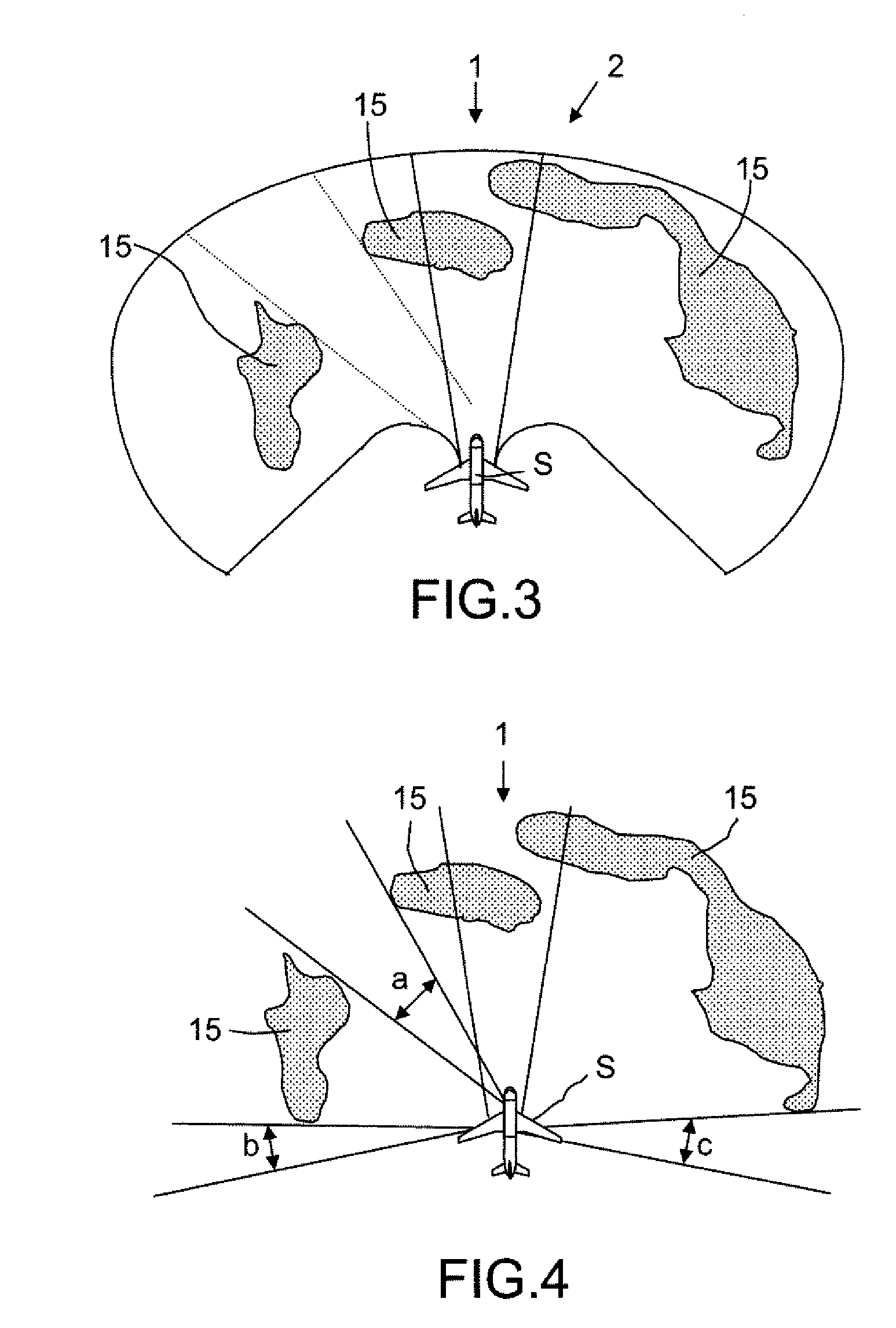Method and device for aircraft, for avoiding collision with the terrain
a technology for aircraft and terrain, applied in the field of aeronautical accidents, can solve problems such as the risk of collision with the terrain, the inability to apply logics that are acceptable for fighter airplanes, and the inability to avoid collision with the terrain
- Summary
- Abstract
- Description
- Claims
- Application Information
AI Technical Summary
Benefits of technology
Problems solved by technology
Method used
Image
Examples
Embodiment Construction
[0057]The system for preventing collisions with the terrain that will be described is based on the one hand on an a priori knowledge of the trajectories corresponding to the standard vertical terrain avoidance maneuvers recommended to the pilot of an aircraft, and on the other hand on the forecasting, currently well controlled over a short period, of the order of a few minutes, of the trajectory followed by an aircraft, made on the basis of the characteristics and, possibly, of the changes of the speed vector of the aircraft, to provide the pilot with an indication on one or more effective avoidance trajectories with or without an automatic engagement of an avoidance maneuver in case of imminent risk of conflict with the terrain.
[0058]The a priori knowledge of the trajectory corresponding to a standard vertical avoidance maneuver is drawn from a behavioral study of the type of aircraft concerned that makes it possible to predetermine different forms of vertical avoidance trajectory ...
PUM
 Login to View More
Login to View More Abstract
Description
Claims
Application Information
 Login to View More
Login to View More - R&D
- Intellectual Property
- Life Sciences
- Materials
- Tech Scout
- Unparalleled Data Quality
- Higher Quality Content
- 60% Fewer Hallucinations
Browse by: Latest US Patents, China's latest patents, Technical Efficacy Thesaurus, Application Domain, Technology Topic, Popular Technical Reports.
© 2025 PatSnap. All rights reserved.Legal|Privacy policy|Modern Slavery Act Transparency Statement|Sitemap|About US| Contact US: help@patsnap.com



